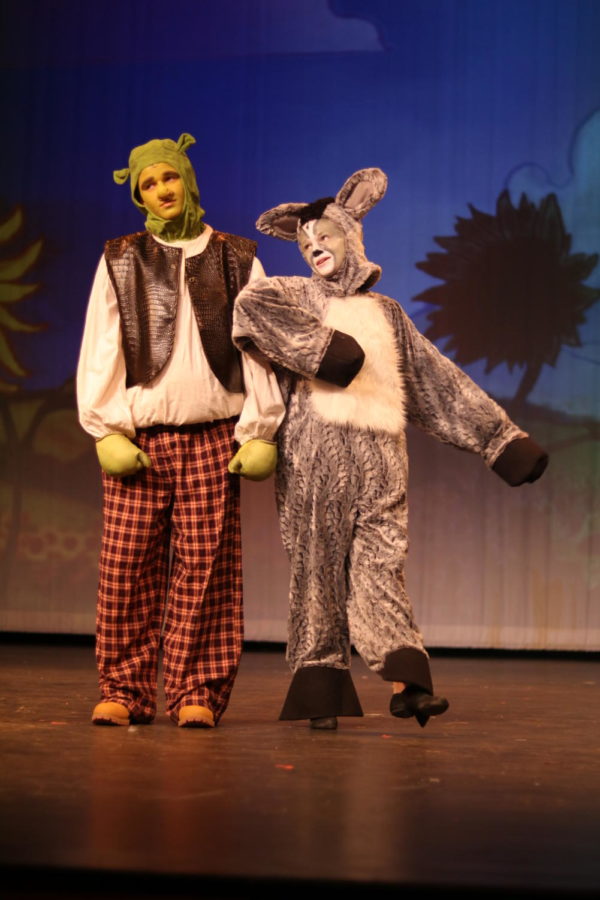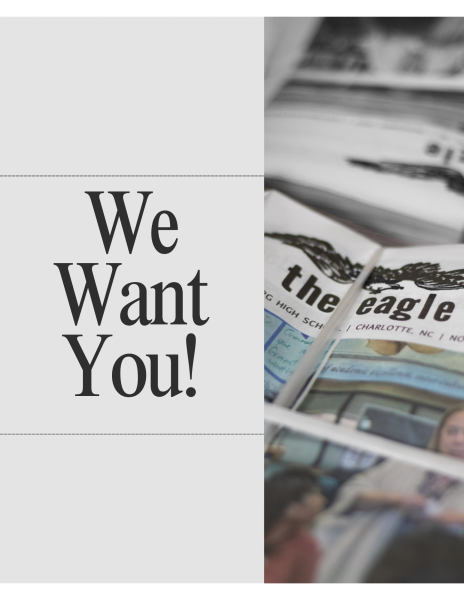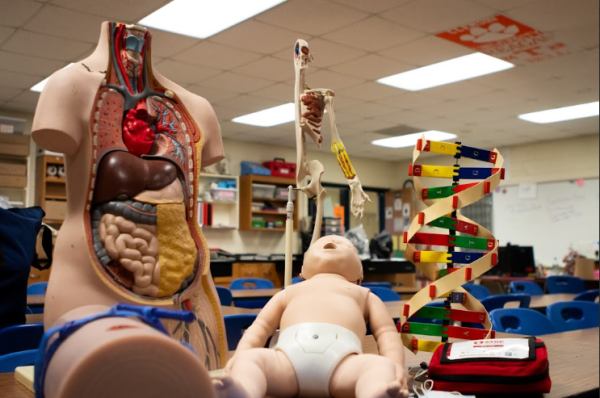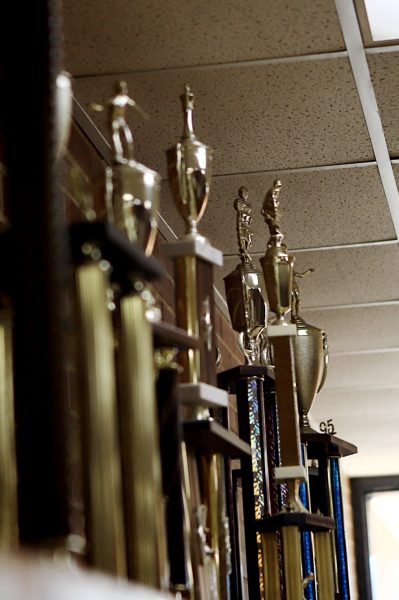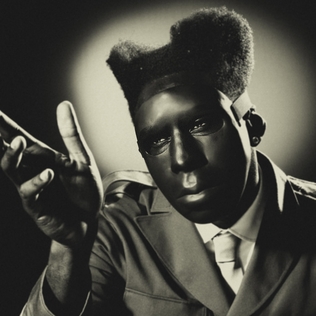“Shrek the Musical”: A hit, ogre-all
Photo by Lucia Wallace
Shrek (Fialko) and Donkey (Carroll) sing “Travel Song.”
I met a cross dressing wolf, three German pigs and a human sized gingerbread woman all in one night: East Meck’s fine arts department produced “Shrek the Musical” under the direction of Kathryn Heinen and Bernadette MacLeod Feb. 8-10, enlightening the audience about the debilitating effects of stereotypes through goofy humor and oddball songs.
Bogged down by stereotypes that lead to prejudice, an ensemble of fairy tale characters are evicted from their homes by Lord Farquaad (Darryl Eaddy) and end up in Shrek’s swamp, seeking refuge. The opening number, “Story of My Life,” presented these fairy tale characters who lack a happily ever after. The costumes (some of which were rented and some of which were assembled by the cast) were excellent, individually and as a unit; not only were they bright but unique to each character–in fact, for example, Pinocchio’s nose even grew when he told lies!
A mix of more than 20 orchestra and band members formed the pit, under the direction of Chris Moreau and Amanda Turner. Having a large, live pit to accompany a musical is a rarity in high schools and a real gift. The music provided for a diversity of sound and even while musicians often outnumbered singers, dynamics kept for a well balanced sound overall.
While Shrek (Andy Fialko) is reluctant to help his fellow fairy tale characters, and does so mainly to run them out of his swamp, he too is a victim of the oppression by the ignorance and prejudice of stereotypes. Assumed to be scary and ugly as an ogre should be, Shrek assumes this role in life, but in “Who I’d Be,” the closing number for Act I, the audience learns the impact that stereotyping has had on Shrek, that actually Shrek doesn’t enjoy being feared or secluded, in fact, if he could be anything, he would want to be someone who is loved.
Fialko was made to play Shrek. His dry sense of humor, his perfect Scottish Shrek accent and just his overall demeanor made for a perfect fit. He performed well throughout, but “Who I’d Be” stood out as his most profound performance.
While Shrek pulled at the heartstrings, his sidekick Donkey (Kate Carroll) drew tears of laughter. Carroll, at 5’4 and about 100 lbs made for an adorable, goofy sidekick (if not occasionally a nuisance). Her best number was “Make a Move,” a plea directed towards the audience for Shrek to make a move on Fiona, wearing sunglasses and backed up by three blind mice.
Shrek meets Donkey (Kate Carroll) early on in the show and an oddball friendship is born. Fialko and Carroll’s relationship onstage seemed incredibly natural–even in the uncomfortable moments.
Sets (by Matthew Owen and David Veto) and props were really outstanding. Shrek’s house in the swamp was big and realistic; the dragon met at Fiona’s tower was a striking purple puppet in the style of Chinese Dragons, held and moved by several actors; when Farquaad comes to marry Fiona, he rides in on a large wooden horse. Congratulations also must be handed to the crew who provided swift and smooth transitions.
Other standouts included an adorable Little Fiona (Cassidy MacLeod) and the tiny Farquaad who, throughout the performance, walked on his knees to portray height. His performance was particularly funny, especially his acknowledgements to the audiences with a wink or a hand gesture (“Oh, stop it”) after saying a joke.
Overall, ensemble singing was strong. Ensemble dancing (choreography by Audrey Baran) lacked unity in several places but the lack of harmony seemed to work with the offbeat nature of the musical and its characters.
Finally, as Fiona (Julianna Kantor) and Shrek fall in love, the audience is reminded something we all know but something we often forget: love exists outside of all boundaries and outside of all stereotypes. Love always is and always was the most powerful force, and when it shows up, whether romantically, between friends, or among communities, it becomes evident just how silly and meaningless stereotypes and prejudices are.
Your donation will support the student journalists of East Mecklenburg High School. Your contribution will allow us to purchase equipment and cover our annual website hosting costs.

